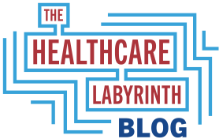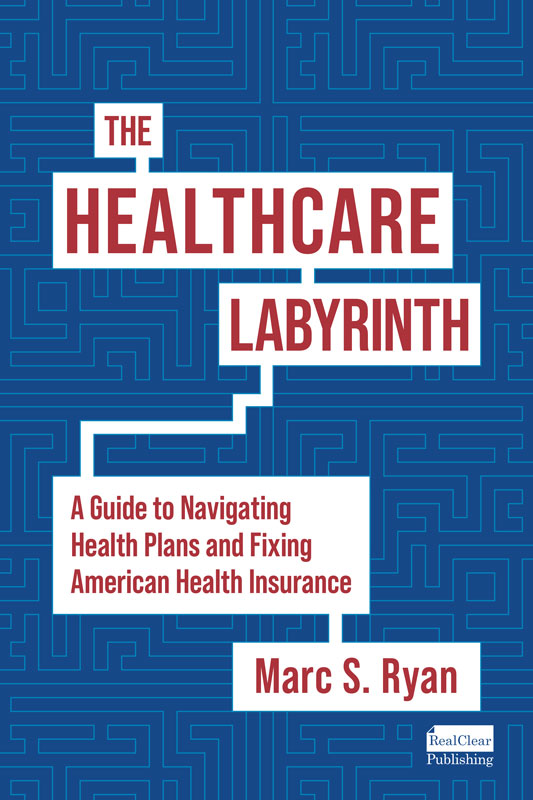Medicare Advantage (MA) has been known as the most profitable sector of any health plan. With high premiums, a lucrative Star quality bonus, and chance to reduce medical expenses compared to the traditional fee-for-service program, plans have been able to register higher percentage and overall dollar margins in MA as compared with commercial and Medicaid. But as we have seen throughout the last few years, MA is not without its challenges and that will continue into the future. Surprisingly, at least one major player could be shopping its Medicare Advantage portfolio and getting out of the business.
Here are the top challenges I see and areas MA plans need to keep an eye on.
The collapse of the insurtechs
Just a few years ago, the insurtechs were the darlings of investors. Investors believed that the insurtechs would leverage technology to transform healthcare, reduce costs, and drive quality. The investors also believed insurtechs would grow tremendously and compete well with the big national plans, especially on MA. Now, all but a few of the insurtechs have collapsed and some are even out of business. This bad press tends to undermine the entire program.
Medical expense rising
In their quarterly earnings reports, most health plans are reporting increases in medical expenses. This is in reaction to the health system’s utilization returning to normal post the COVID pandemic, huge cost increases for cancer and related drugs, and the push to cover expensive weight-loss drugs. This hits MA plans more as Medicare is a sicker cohort than other lines of business.
Enrollment headwinds
Earlier in the decade, MA enrollment was growing at a fast clip. But in the last few years, growth has been more moderate. Yes, MA has reached 50% of all Medicare beneficiaries, but growth rates from a numbers and percentage perspective have come way down. From January 2022 to January 2023, growth was just over 6%, or 1.8 million members. Most estimates suggest that the growth rate will remain low in 2024 even with growing Medicare rolls due to aging and more baby boomers (who are used to managed care) hitting age 65.
What’s more is that many of the top health plans are struggling to drive enrollment each year. About nine national plans have over three-quarters of all MA enrollment. Their enrollment performance has been mixed. While bellwether United has had consistent high growth (due to its AARP branding deal), other national plans have struggled in some years. Some national plans performed poorly in both the 2022 and 2023 enrollment season and membership remained flat or they shed lives.
Plans need to execute consistently well on the benefit design and execution front. Of course, much of that depends on your Star score and how much you have available for added benefits – see below.
Star troubles
Plans, too, are struggling with a rapidly-changing Star quality program. Measures are getting much more complex and the Centers for Medicare and Medicaid Services (CMS) will continue down this road. As a good example, more complex measures already in place have average scores in 2024 that are well below the “4” needed to achieve an overall quality bonus: Plan All Cause Readmissions (2.9), Transitions of Care (2.5), and Follow-up after Emergency Department Visit for People with Multiple High-Risk Chronic Conditions (3.0). Medication Reconciliation Post Discharge was only a 3.4. In addition, CMS is changing weighting of certain measures and the new Tukey outlier deletion for 2024 Star created challenges in achieving high performance in many measures. It will remain in place.
The average Star score dropped for 2024 Star from 4.14 in 2023 to 4.04. Just 42% of contracts have a 4 Star rating in 2024, down from 51% in 2023. Weighted enrollment in 4 Star or greater plans, though, did move upward, showing how savvy consumers have become.
Many plans lost focus on Star when the COVID pandemic led CMS to create so-called allowances in how Star scores were calculated. Many plans rested on their laurels or simply forgot about the need to work quality continuously.
Plans clearly need to invest in quality performance as high Star scores are key to success in MA. Over the past two years alone, big plans have reported billions in revenue lost because of poor performance on the Star front. The higher a Star score, the more money is supplied to the plan (in the bonus as well as the rate rebate advantage) for added member benefits. Better benefits in the market drives enrollment and greater overall margins and performance.
Rate realignment
A bright light is shining on the perceived overpayments that exist in MA. And with looming Medicare insolvency finally resonating on Capitol Hill, lawmakers in both parties are looking at various areas as a potential source for spending cuts and deficit reduction.
While MA saw huge rate increases in 2022 and 2023, the 2024 growth rate was much more modest. Poor Star ratings will steal bonus and rate rebate dollars from plans in coming years as well. In addition, a controversial phase-in of a change in the risk adjustment model will lead to lower overall risk-adjustment revenue for plans. CMS says the new model reflects more current costs associated with various diseases, conditions, and demographic characteristics. There are some revisions focused on reducing the sensitivity of the model to conditions with more coding variation.
What are some other changes that have been raised?
- MedPAC (the congressional policy arm for Medicare) and others are arguing that an overhaul of the rate-setting system should occur, including the following:
- Taking an arbitrary reduction to the MA rates overall (e.g., an additional 2% off of county or regional rates) given perceived overpayments against traditional Medicare fee-for-service (FFS).
- Changing the coding intensity negative adjustment from 5.91% to something greater. This would be due to the perceived overcoding in the MA systems as compared with traditional FFS.
- Moving to a blend of national expenditures and local expenditures to compute base rates in each county/region.
- Over time, moving to an overall benchmark ceiling of 100%. Congress has reimbursed some rural and suburban areas greater to entice plans to come there. This lowering of the overall benchmark would include deeper cuts in urban areas and refining the quartile system that exists today (which ranges from 115% down to 95% in heavily urban areas).
- Some argue for a divorce of the MA rate-setting system from traditional FFS. This is due to concerns that the FFS data is no longer a reliable cost predictor as the MA system takes on more and more of the Medicare beneficiary population. It is not a bad conclusion and plans should begin to think through the right alternative rate-setting system.
- MedPAC also wants to make the Star program budget neutral (within regular rate-setting dollars) as opposed to being an added expenditure. In 2023, added Star spending was almost $13 billion. At the same time, the rate rebate advantage would be set at 75% as opposed to the range of 50% to 70%. In addition, MedPAC proposes an overall reform and overhaul of the Star program, including rating at a more local level instead of at the contract level.
Notwithstanding the popularity of the MA program on both sides of the aisle, MA plans will need to plan for more rate reductions in the future even as they fight some of the uglier proposals.
RADV rule
The new risk adjustment data validation rule will prove to be a significant challenge for MA plans. Some plans are challenging the rule on a number of fronts – its retroactive nature, the lack of a FFS adjuster, and extrapolation of penalties. The rule would subject plans to ongoing review of risk adjustment submissions and require plans to submit evidence (e.g., charts and other data) justifying the disease states or conditions submitted for its members. Errors would be extrapolated across the entire membership of the plan and result in huge penalties.
Controversy surrounds the gap between risk scores in the traditional FFS program vs. MA. Plans argue there is no incentive for providers in FFS to accurately code. Others argue that plans have sloppy risk adjustment submissions and that some plans deliberately overscore members. The truth is likely in the middle. Plans will need to set up comprehensive and accountable risk adjustment submission and validation processes in order to protect themselves.
Prior authorization reform
Providers have lobbied Capitol Hill and CMS relentlessly on the issue of utilization management and prior authorization. Both parties and CMS have responded with significant restrictions on the use of prior authorization. The 2024 MA and Part D rule would no longer allow MA plans to use separate evidence-based criteria to evaluate the need for benefits and services in the Part C medical world. As of January 1, 2024, plans are now limited to applying the National Coverage Determinations (NCDs) and Local Coverage Determinations (LCDs) to determine medical necessity (unless an NCD or LCD is not fully established). This is a terrible decision by CMS as it will lead to huge cost increases at a time when medical expenses are increasing dramatically. Plans should note that CMS will be performing ad hoc audits in 2024 to ensure compliance with this new rule. In addition, a new 90-day transition policy has been instituted, which bars plans from prior authorization on continuation of an active course of treatment (whether the provider is in-network or not).
Other bills on Capitol Hill would further restrict prior authorization use.
Interoperability rules
Various in-force or future interoperability rules require plans to establish electronic prior authorization for medical services and share data with plans. They also accelerate prior authorization approval and notification timeframes.
Other rules
MA plans are faced with other major changes or challenges as well, including:
- Greater program audit scrutiny, especially with regard to Special Needs Plans (SNPs) and delegated oversight (e.g., marketing agencies).
- Plans will need to provide evidence that some of their supplemental benefits are tied to improving or maintaining health. As well, plans will need to apprise members of the availability of supplemental benefits in an effort to ensure they are utilized.
- New health equity requirements have been proposed.
- There are proposed additions to the external review processes (via the QIO) for the discontinuation of certain services beyond hospitalization.
- Major changes in the area of dual eligible SNPs aimed at having these Medicare plans be heavily integrated with Medicaid. This will open up vast coordination and complexity. Note that SNPs are growing tremendously and this is why CMS wants greater oversight and coordination.
- Major changes to the drug program rolling out, including reducing members’ cost-sharing and ultimate costs, the ability to pay cost-sharing monthly to the plan as opposed to at the point of service, the promotion of biosimilars, and the introduction of price negotiations for both Part B and D drugs.
- Complying with the new price transparency requirements, including posting negotiated rates publicly.
- Major scrutiny on the use of AI for claims and authorization denials.
Conclusion
Now, lest you think I am too negative, as I said at the beginning, MA continues to be a strong business proposition and an incredible value for seniors and the disabled. But the laundry list above is concerning. More to the point, Capitol Hill is resonating with anti-MA sentiment. Some is driven by a left wing that smells blood and wants to undermine MA in hopes of keeping Medicare for All alive. Other anti-MA sentiment is driven by the provider and advocate lobbies that have their nails in Democrat and Republican lawmakers alike on issues such as prior authorization, misleading marketing, poor network coverage, and so-called “buyer’s remorse.” The MA industry needs to fight back and clearly show that MA is critical to Americans’ future, especially for those of low- and moderate-incomes.
#medicare #medicareadvantage #ffs #medicaid #integration #insurtechs #mlr #medicalexpense #cms #aarp #stars #marates #medpac #codingintensity #overcoding #priorauthorization #ncd #lcd #interoperability #snps #supplementalbenefits #healthequity #qio #partd #drugpricing #drugpricenegotiations #pricetransparency #ai #claimsdenials
— Marc S. Ryan





